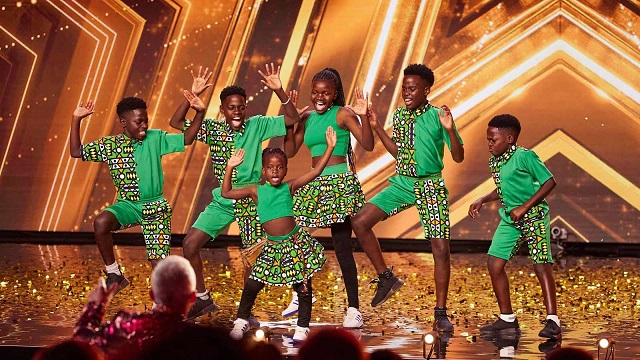
Dauda Kavuma’s Ghetto Kids and the golden buzzer
COVER STORY | THE INDEPENDENT | In 2009, while working as a primary school teacher on a Shs60,000 (Approx. US$16) monthly salary, Dauda Kavuma says he took in three children aged about 10 years who were from deprived backgrounds. He was 30 years old and offered to be a father figure for them.
Kavuma had graduated as a professional primary school mathematics teacher just two years earlier in 2007. He says, based on how a stranger once helped his dream come true, he had since his childhood promised himself to help children.
“I had been a street kid and I was passionate about reaching those boys and girls. They needed a Good Samaritan, just as much as I had one,” he says.
He had gone through school on scholarship because of his talent as a football player. But he also was very interested in music and drama. He says, however, he knew he had to do more than simply teach inside the classroom. So he set about teaching his three children to dance and entertain.
In 2010 he went for a show staged by popular Uganda musician Edrisah Kenzo Musuuza aka Eddy Kenzo. At the time Kenzo’s song, ‘Stamina’ was a hit. To get recognised, Kavuma asked one of the children he was training, Alex Ssempijja to go on stage and dance the Stamina Dance which Kenzo had popularized.
He says Kenzo liked Alex’s dancing and asked them to dance in videos for his other songs like ‘Mudenke’ and ‘Champagne.’ Kavuma recalls that people soon called him saying the ‘Sitya Loss’ dance video had gone viral.
“Honestly I didn’t know what viral or YouTube meant so I ignored it then. Then came the calls from journalists, promoters and people who wanted the kids to dance at their events,” he said in an interview in the Daily Monitor.
The ‘Sitya Loss’ video which features the Kids dancing on the streets of Kampala hit over 51 million views on YouTube and other social media platforms.
Alex Ssempijja became the face most associated with the Sitya Loss videos. But the other children Kavuma took in were Sylvia Nabate and Nansubuga. Alex Ssempijja died in a bicycle accident in 2015, one year after Kavuma had founded their group; the Triplets Ghetto Kids.
The golden buzzer
The Ghetto Kids have since featured their dance moves all over the world in videos uploaded on YouTube. After getting their break in the 2014 videos of a dance cover of Kenzo’s ‘Sitya Loss’ that was already a hit on YouTube and social media, they collaborated with Kenzo on his music video ‘Jambole’ in 2015, which also became a hit.
They became an international sensation and have never looked back. They have appeared on international TV shows, been interviewed, performed and schmoozed with celebrities. They have travelled the world.
American artists Nicki Minaj and P. Diddy have spoken admiringly about the Ghetto Kids and they have collaborated with French Montana on his music video Unforgettable in 2017, which launched the group’s success in the United States. Featuring Swae Lee, the Unforgettable video has had 1.5 billion views on YouTube. They performed in Chris Brown’s music video ‘Back To Love’ in 2019 and have had gigs in the UK, USA, Qatar, France, Oman, Australia, Nigeria, South Africa, Kenya, Rwanda, South Sudan, and more.
The group have been called ambassadors for Ugandan culture and a showcase of the country’s rich music and dance heritage to the world. Their unique style of dancing combines traditional Ugandan dance moves with modern hip-hop moves.
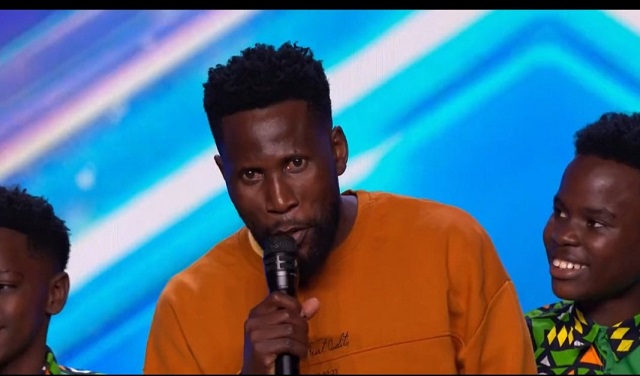
Kavuma calls their style `Afri-comic dance.’ According to an interview in The Daily Monitor, it is designed to connect the audience with the performers.
“The people feel they can dance with us, and it is full of entertainment,” he said. In 2019, the group was nominated for the Best African Dance Group at the African Entertainment Awards USA.
They were named the Best African Dancer in the Afrikan Muzik Magazine Awards (AFRIMMA) and won the Best Dance Group award at the HAPA Music Awards held in Los Angeles, USA. They performed at the men’s football World Cup in 2022.
Kavuma was once again in the spotlight when on April 15 the Ghetto Kids dancing and entertainment performance smashed records of one of the world’s most watched TV series, the UK’s Britain’s Got Talent (BGT) 2023 auditions in London.
The televised British talent show competition, Britain’s Got Talent (BGT), is part of the global Got Talent franchise and is among the top three talent shows on TV in the world. On average, according to trusted sources, it draws viewing figures in the UK alone of around 10 million viewers per series. At least one show attracted a record 17.3 million viewers. The current series that the Ghetto Kids aced; Season 16, is already the most-watched ITV show of the year after 6.2million viewers tuned in for the first episode of its sixteenth series.
In a never seen, never done before decision of the moment, one of the series judges gave the Ghetto Kids the golden buzzer midway their act. The emotion, energy, colour and camera imagery of Uganda’s disadvantaged kids; one of them just five years old, dancing in the confetti of success on a global stage was overpowering.
The format of the show is that the judges or hosts press the golden button after great performances but the Ghetto Kids were showered with golden confetti while they danced on stage.
“I know it has never been done before but I have to do this!” said Italian talent judge Bruno Tonioli as he pressed the golden buzzer for the Ghetto Kids before they finished their dancing to the beat of Waka Waka (This Time for Africa), the official 2010 Fifa World Cup song by Colombian multi-talented singer Shakira and two other songs. They also danced to the Afro house song Marimba Rija by Angolan musician Dotorado Pro. This is the song whose video propelled them to global recognition in in 2017.
The Ghetto Kids, like other contestants went through to the finals, first audition in front of a whole stadium of people and the judges. Then they have to make their way through the live rounds until the top 10 acts are selected for the grand finale where the winner is announced.
That means the Ghetto Kids are in the running for the top prize for the eventual winner of £250,000 (Approx. Shs1 billion). If they do not win that, they win zero money only fame, bragging rights and possible gigs.
A report quoting the BGT founder and judge Simon Cowell revealed that during the judges’ auditions they used a record eight golden buzzers, meaning the competition will be exceptionally high once again.
Born to succeed?
Today, Kavuma says he takes care of 30 children. Kavuma is married to Sarah Kavuma and they have children, some of who are performers in the group.
He says he finds kids leaving on the street and persuades them to come and stay with him. In case of the children from poor homes, he talks to the parents and they allow him to take full responsibility for the children on condition that he will place them in school, dress, feed them. Some continue living with their parents. Not all of them are dancers. Kavuma believes the children have the belief that if he made it from deprivation, they too can make it. But can they?
The Ghetto Kids that thrilled the world included Akram Muyanja and Madwanah Ssegirinya, aka King who are 13-year olds, Priscila Zawedde Kisakye, Asharif Mbazira and Shakib Mutima who are 12-year olds and Josephine Busingye who is five years old. She carried a banana fibre doll on her back as a prop and thrilled the judges, including Simon Cowell, with her dance moves. Simon said the performance was “wonderful.”
“That’s never actually happened. Normally, the Golden Buzzer is pressed afterwards. He (Bruno) gave you the Golden Buzzer and you performed in the confetti. It was wonderful,” Cowell said.
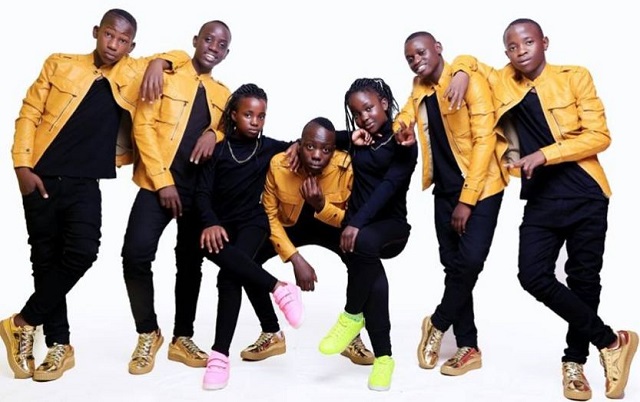
“And by the way, who is this little one?” Cowell said.
“My name is Josephine,” she shot back.
Before that there were Ghetto Kids performers like Alex Ssempijja, Fred Tumusiime, Isaac Tumusiime and Patricia Nabakooza. There were also Nyangoma Lucia, Ssentogo Ronald, Lubegga Bashir, Sselubu Hassan, Wasswa Hassan (mani King) Tusiime Isaac, Tumwesigye Fred, Kavuma Ashley and Babirye. And it is likely there will be many others. And at the head of each troupe will be Kavuma; athletic in lifestyle, with a hi-top fade haircut, and street-wise vibes.
Dauda Kavuma is one of those rare people born to conquer odds. The life of the founder, leader, manager, and trainer of Uganda’s top global entertainment enterprise, Inspire Ghetto Kids (Triplets Ghetto Kids), shows how pursuit of single clear passion, hard work, and luck can rewrite the lives of ordinary people.
And he has a super one-line pitch for that mission which he unleashed in a quick interview on BGT. He told the judges and global audience: “I have 30 kids. Some are orphans and am using music, dance, and drama to make their lives better.”
Kavuma’s most famous quote is: “When you dance, you forget that you didn’t eat. When you dance, you forget that you have lost someone. You forget everything. You focus on dance.”
He said this in an interview in a culture segment of Euronews; Europe’s leading international news channel, providing global, multilingual news with a European perspective to over 400 million homes in 160 countries.
Life is a strategic game against poverty, says Kavuma on his NGO website. He says one shouldn’t expect life to be easy and they should not give up without a fight.
“Hope isn’t something abstract, I believe it shows itself in practical ways,” he writes on the Inspire Ghetto Kids website.
One must also get better at asking the right kind of questions; the kind that get you more informative answers.
He recalls how he and friends on the street would plan and organize, try things out and help each other get back on their feet when their plans failed.
“I still see that same entrepreneurial spirit among the street kids these days,” he says.
Kavuma was born in 1979 in Butambala District. He says he dropped out of school when his father died and his mother failed to pay the school fees. He was in Primary Four. He soon started fending for himself. He says one day he was playing football when a stranger he learnt was called Kaita Musa spotted him. When they spoke, the man asked him if he was in school. Kavuma answered in the negative.
“He told me if I give you a chance, would you go back to school? I said, yes, that’s what I really want,” he recalls.
The man directed him to go to a certain school and when he got there, he was admitted to the school and given all the necessary things he needed to study. That is how in about 2009 he was working as a teacher with a Shs60,000 (Approx. US$16) monthly salary and took in the first three children. Now he is staring at a Shs1 billion prize from BGT. Is that because of talent, hard work, or luck?
Transforming power
Francesca Negro, an Associate research scientist from the Universidade de Lisboa in Lisbon, Portugal who studies how African dance styles travel to the rest of the world, says the Ghetto Kids’ unique performances “draw from popular African songs and traditional African dance forms with an innovative contemporary twist.”
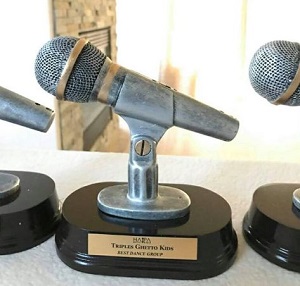
“Ghetto Kids are proof of the power of dance to transform lives,” he says in an article in the academic journal; The Conversation.
The choreography for the Ghetto Kids Britain’s Got Talent performance was created from a collaboration by two Ugandan choreographers, Nandala Mathew, who travels the world spreading African dance styles in incredible fusions with hip-hop and funk, and Namata Esther, a talented Ugandan choreographer who works with the Ghetto Kids Foundation.
The performance was all about fusion, opening with a nod to US pop star Michael Jackson’s famous pelvic dance move and the sounds of a joyful soukous song which then moved to Afro house sounds (electronic dance music with South African roots) with a sprinkle of coupé-décalé.
They mixed some traditional steps of these styles with a few other moves from the numerous fascinating dances of the Ugandan repertoire.
Francesca Negro says Uganda traditional dances include ding dong (a children’s play dance from the Acholi people), agwara (a ritual dance today used in wedding and funeral ceremonies), ekoche (a courtship dance of the Lango people), ekizino (from the Bakiga people) and ekitaguriro (from the Banyankore people, also called the cow dance and based on the movements of the cow). Together with several other Ugandan dances they represent one of the richest living dance archives on the continent.
“Add to this the personal facial and bodily interpretations of the young dancers and you have a mix that’s absolutely fresh,” he says.
What makes them unique?
The combination of tradition and innovation is perfectly mastered by Ghetto Kids. Their iconic moves reflect the flux of artistic and cultural influence that exists between sub-Saharan African countries.
The group is also aware of the power of both displaying and dispelling stereotypical images of Africa through surprising and funny interpretations of their influences. The iconography of the traditional African village, of rural landscapes and even of African swag (dressing in fancy hats and jackets) are used to propose their own attitude towards life.
A mix of self-confidence, irony and joyful optimism exude from all of their videos and performances. They embrace who they really are and are willing to share their recipe for happiness.
Why Ghetto Kids matter
Ghetto Kids founder Dauda has often spoken of being a street kid himself, unable to afford to go to school. A stranger funded his education and he promised himself he’d do the same for others; he started his foundation after graduating as a math teacher.
Francesca Negro says Dauda’s mission takes on particular importance in Uganda, a country that has struggled for decades with civil wars where children have been victims of unstable political conditions as well as abduction and abuse from militant groups like the Lord’s Resistance Army and where malaria, respiratory infections and Aids have ended many young lives.
In this context, keeping children visible is also a strategy to protect their lives, to make them count, to stimulate their growth and education, to repair the violence of the past and to denounce their social conditions.
“Triplets Ghetto Kids are the expression of the need to convert historical weakness into strengths for the whole community. They are dancing for their education and survival, and they will succeed,” says Negro. But don’t believe me – just watch!
 The Independent Uganda: You get the Truth we Pay the Price
The Independent Uganda: You get the Truth we Pay the Price



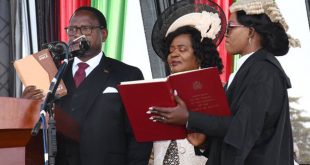
Very good and well written article. Well done